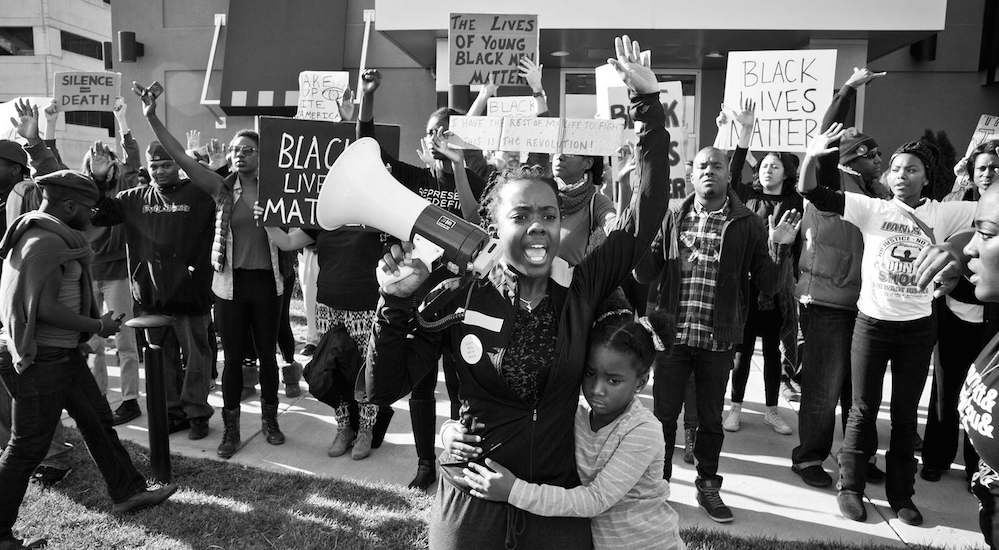In the months since the unarmed Michael Brown was killed by police in Ferguson, Missouri, the Black Lives Matter movement has exploded into the mainstream consciousness. Ferguson became the center, especially when rising tensions between citizens and police resulted in rioting and looting. Whose Streets? attempts to tell the story of Ferguson from the residents of Ferguson themselves. While the documentary is inherently biased towards the movement, it offers an in-depth and at times shocking look at the main players who have built this movement into national news.
Director Sabaah Folayan spent years in Ferguson and has accumulated interviews, news footage, police reports, and social media posts to present a multi-faceted look at Ferguson from the residents themselves and what their experiences say about the African-American experience nationwide. Since the footage comes directly from residents, we see Michael Brown's mom distressed outside police tape as her son's body lies in the street surrounded by police. We see the raw anger from people who've seen this happen to themselves or their loved ones. They each tell anecdotes about their interactions with police and how most of them have records stemming from unpaid traffic violations. It's eye opening to hear their accounts of routine discrimination.
As the protests grow and rioting breaks out, Whose Streets? explores what happened those nights that news reports didn't show. Distraught and angry, protesters felt scared and intimidated when police showed up with assault rifles and tanks. When they refused to back down (to chants of "Hands Up! Don't Shoot"), police fired flash bombs and tear gas into the crowd, causing a mass panic that had some protesters feeling trapped. The raw footage provides a sense of immediacy that connects the audience directly to the police's tactics.
We follow along with these protesters and get to know them, although only first names are used. David creates CopWatch and goes out with a camera every night to record. Brittany and Alexis, a young lesbian couple, organize rallies and protests while holding down jobs and going to school. The director makes sure to convey their lives outside of the movement, taking care of their children and loved ones. It drives home that these are people with whole and complicated lives outside of their civil rights activism.
Loosely told chronologically, the film begins to wind down with some good news when the Department of Justice finds that the Ferguson Police Department is without a doubt guilty of targeting African-Americans in arrests and citations, confirming what they said all along. But instead of jubilation, the people of Ferguson are resolute and determined to keep protesting and fighting back.
By focusing on Ferguson, Folayan and Davis provide us with a microcosm of what’s happening to African-Americans across the country. The two are clearly advocates for the Black Lives Matter movement and Whose Streets? gives the movement faces and voices and families. It’s important work, even if the documentary itself is less than polished.

